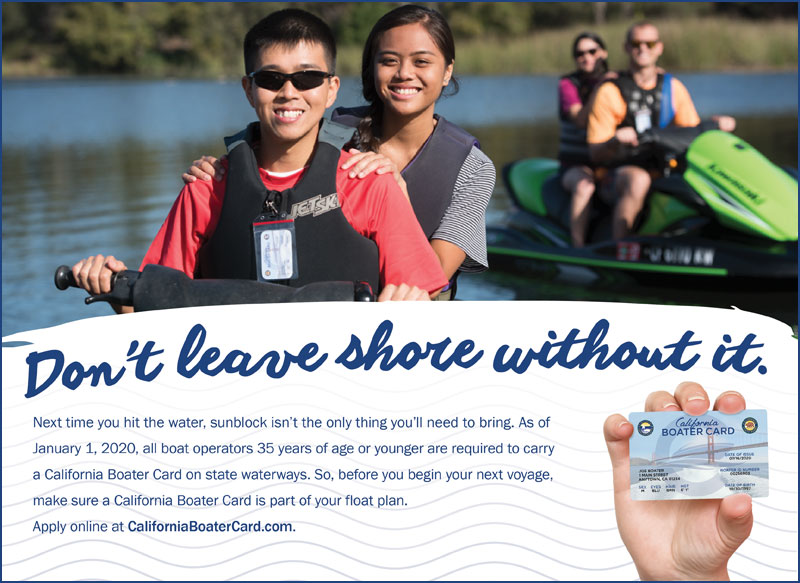
The Pros and Cons of a New Ferry Line at Berkeley Marina, Part 1
As ferry service in the Bay Area continues to expand, Berkeley Marina is considering a new ferry terminal located on the now-shuttered University Avenue Pier to service a route to San Francisco. The potential project, which will soon go to a yearlong public-engagement process, is part of Berkeley Marina’s wider, long-term plan to create a financially self-sustaining, publicly owned marina. As we’ve reported, much of the Marina’s infrastructure has “aged out,” and the price tag to replace docks, roads and the 83-year-old pier — which closed in 2015 due to structural safety issues — far exceeds the self-sustaining financial model, or Marina Fund, leaving the City to seek out money where it can.
“The Marina Fund is designed to support all aspects of the waterfront; the financial feasibility of this fund supporting these elements with its current revenues is unrealistic,” a recent City of Berkeley memo read. Grants and loans have helped finance a few new infrastructure projects at the Marina, but there’s still plenty of work to be done. The question of how to renovate the once-popular pier, which has a price tag of between $17 million and $55 million, remains open.
The City of Berkeley has been working on a study with the Water Emergency Transportation Authority, or WETA — the Bay Area’s largest public-commuter ferry service — to determine the feasibility of a joint project to rebuild the pier and open a new line. While the specifics of who would pay for what will be worked out in the coming year, the City of Berkeley is looking for partners to inject cash into building a new pier and breakwaters and for dredging, as well as for renovations to existing parking lots, walkways and restrooms.
Opponents of the ferry point out that while the partnership with WETA might help finance a new pier, a Berkeley ferry line would not provide regular taxable revenue to the Marina Fund in the way that restaurants, hotels and other businesses do. A city official told us that the city believes the ferry project “could be a catalyst for revenue associated with the Marina Fund, as the percentage rent from existing or new restaurants and hotels in the Marina could increase from additional foot traffic. Over the next year, the city will study the financial opportunities of the ferry/pier project in both planning studies.”

The new Berkeley terminal was first proposed in 2009, but was ultimately rejected. At the time, the project was criticized because the city was expected to be saddled with at least part of the operational costs of running the line. (It’s not uncommon for cities to partner with WETA as a means of investing in their public transit.) The project was also unpopular with recreational advocates, who said that the design of the terminal would cut into waters used by windsurfers, kayakers, swimmers, and the occasional dinghy. Recent design proposals for a pier terminal are relatively unchanged.
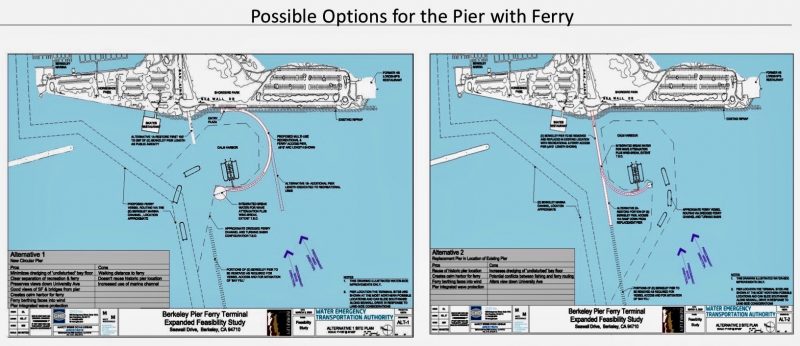
The financial landscape has changed since 2009. In 2018, Bay Area voters approved Regional Measure 3, and WETA “is expected to receive up to $300 million for one-time capital construction projects, and up to $35 million per year to operate an expanded region-wide ferry system,” the City of Berkeley wrote, adding that pre-COVID Bay Area ferry ridership was up 94% since 2012. WETA plans to widely expand its services, with seven locations around the Bay, and a “robust 16-terminal regional network” under consideration. (The money from Regional Measure 3 is currently tied up in a lawsuit, but the funds should eventually become available.)
Given the potential for an expanded fleet, there’s a sense of urgency to move away from diesel ferries to low- or zero-emission vessels. While there are numerous prototypes around the world, there has yet to be a “breakthrough boat” to hit Bay Area waters, which would presumably open the door for a green fleet. New boats on the Bay are as low-emission as they’ve ever been, but ferries still have a large carbon footprint, and are among the most inefficient modes of transportation in terms of fuel used per passenger-mile (though single-occupancy cars are by far the most inefficient).
The pandemic has decimated public-transportation usage. According to a WETA spokesperson, ridership is down about 90%. It’s not clear what lasting impacts the pandemic will have on overall ridership — will part of the workforce permanently shift to remote employment, or will there be pent-up demand to get back to the office? Regardless, it’s fair to say that there’s an abundance of public interest, political will and hard cash ready to be invested into Bay Area ferries.
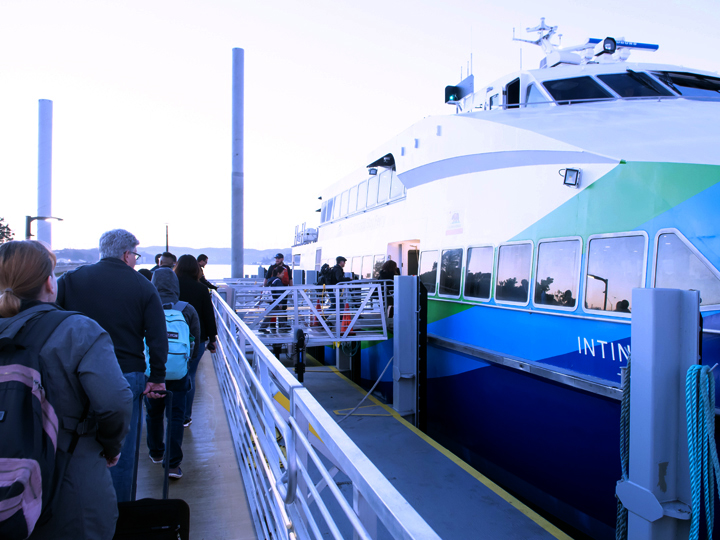
The Bay Area Ferry Landscape
WETA is one of two Bay Area public ferry lines. There are numerous “tourist fleets,” as well as several smaller-scale private operators (two of which operate out of Berkeley Marina). As implied by their name, part of WETA’s mission is to coordinate “water transit response to regional emergencies.” WETA, which also operates under the brand San Francisco Bay Ferry, has a fleet of 15 high-speed, passenger-only ferry vessels. (We did not obtain employment figures for this story, but needless to say, a number of professional mariners are employed by ferry lines.)
Taking the ferry is awesome. They’re timely, relatively affordable (though definitely a tad on the expensive side), and easy to catch. The coffee is hot in the morning, the beers cold in the evening. The views of the waterfront are always stunning, and for sailors and non-sailors alike, it’s just fun to zoom around on the Bay.
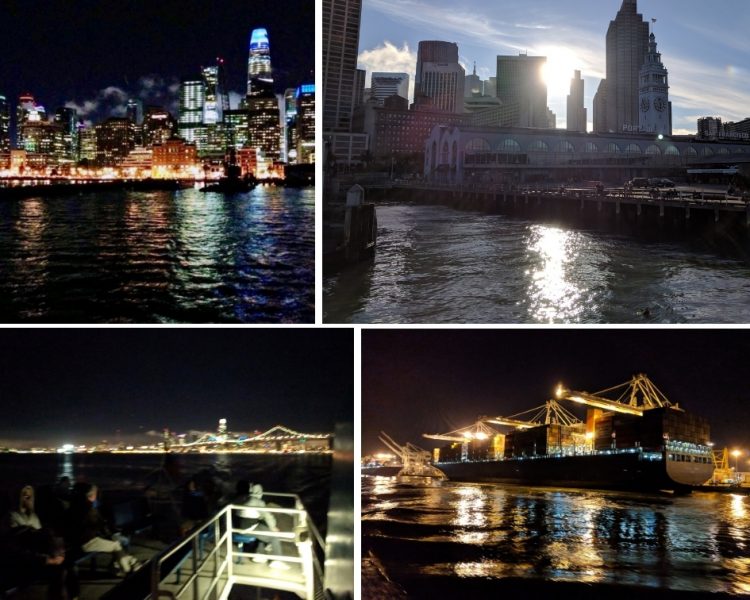
But while standing on the top deck of a ferry a few years ago, we were reminded of one of the “costs” of the ride. The smoke from the stacks occasionally wafted and stalled over the boat as it turned and maneuvered.
During the public-debate phase of the Berkeley ferry terminal in 2009, one comment included an analysis of fuel efficiency of transit vehicles, which was compiled by Paul Kamen. Using BTU/passenger-miles, which is based on the chemical energy of the fuel burned for each vehicle, a single-occupancy car uses 7,000 BTU per passenger-mile (assuming the car gets 20 miles to the gallon), a carpool 2,300 (also assuming 20 mpg), a bus 660, light rail, 91, and the BART train 68. (Most of these modes of transportation use about double the BTUs per passenger-mile when they’re not fully loaded; fewer passengers equal less efficiency per mile.)
The Peralta — a 331-passenger, 25-knot service-speed WETA boat (which is “two generations older than our core vessels,” according to the spokesperson) — uses between 4,560 BTU/passenger-miles when half full, and 2,280 at capacity. “Fifty percent capacity is about the best you can expect for a commuter service, considering the reverse-commute direction, while a carpool can operate at near 100% both ways,” Kamen said.
“We’ve reformed our fleet over the last few years to meet California’s air-quality standards, which are the strictest emission standards in the country,” a WETA spokesperson told us. WETA’s Hydrus and Pyxis classes — which include seven 400-plus-passenger, 27- to 35-knot service-speed boats — are equipped with “Tier 4” engines. “[These vessels] were the first of their kind in the country; it’s the cleanest you can have for a diesel engine,” the spokesperson said of Tier 4, which is an emission standard established by the Environmental Protection Agency and the California Air Resources Board. (The Hydrus class, which debuted in 2017, technically has “Tier 3” engines with “additional pollution control systems,” to meet Tier 4 standards, the WETA spokesperson said.)
Despite increasing cleanliness, ferries are still thirsty animals; some estimates say they use up to 300 gallons of diesel per hour.
What About a Zero-Emmission Vessel?
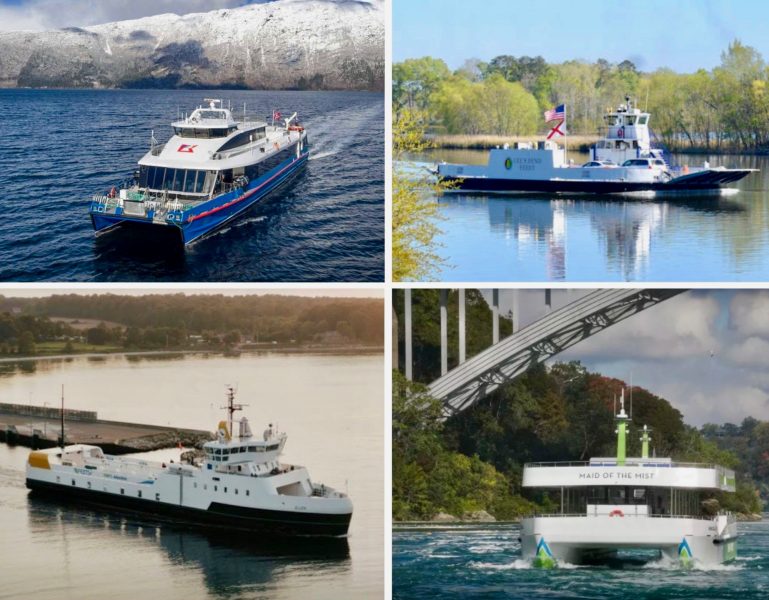
Earlier this year, WETA received a grant from the California State Transportation Agency to build their first battery-electric zero-emission ferry. “It would serve the future connector route to the Mission Bay neighborhood of San Francisco,” the spokesperson told us. “We are eager to begin that project and deliver a zero-emission passenger ferry that will move us and the maritime industry forward. It’s a huge learning opportunity. Building the required infrastructure, building a vessel, and putting it into service will teach us a lot, push the industry forward, and let us make smart decisions for the future of the fleet going forward.” The spokesperson added that WETA is seeking grants to fund the creation of a comprehensive green-fleet blueprint for the ferry system.
Are electric ferries a “magic bullet” for transportation? An electric-powered anything is, of course, only as clean as the energy that it plugs into. There are also skeptics of the hybrid concept’s being used in a maritime setting. “Hybrid power makes no sense for an application that requires steady, continuous power output,” Paul Kamen said. “The low-carbon output from demo projects is a consequence of lower speed, not hybrid power. Hybrid is great for cars because they require frequent power surges. But that’s not the case for boats and ships. It’s no accident that the venerable Atomic Four engine block was originally for a tractor motor.”
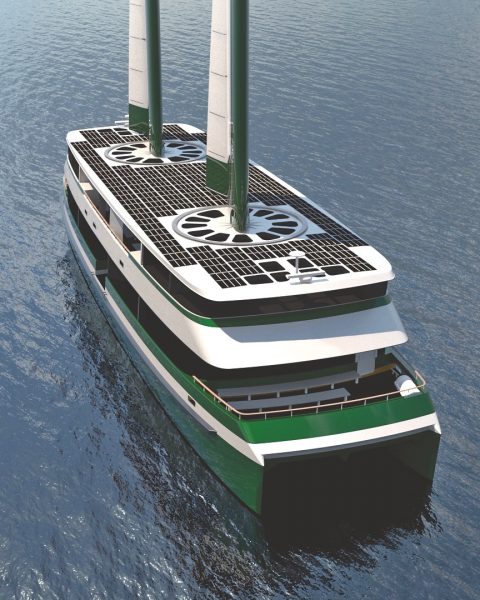
Back to the Berkeley Ferry Question
“Since WETA and the City of Berkeley are early in the planning phase of this project, all options for vessel propulsion technology will be considered,” the WETA spokesperson told us.
It’s not clear, however, how much say individual municipalities ultimately have in what type of vessels will service their line. Richmond mayor Tom Butt told us that his administration was strongly behind an electric ferry for the city’s WETA-run line, which opened in early 2019. But the line is currently serviced by a diesel ferry. “We had very little say; we weren’t part of the decision-making apparatus.” The WETA spokesperson told us that vessel considerations are made not just for individual lines, but for the needs of the entire fleet.
Exactly what types of boats may or may not service a Berkeley line — if there is to be a ferry there — remain up in the air. Discussion of the pros and cons of a Berkeley ferry line might hint at debates that will play out in other parts of the Bay Area. With Treasure Island, Mission Bay, Redwood City, Seaplane Lagoon in Alameda, and cities in the the South Bay and Carquinez Strait all considering new ferry lines, the discussion will revolve around each each municipality’s unique financial situation, waterfront geography and environmental-policy goals.
America’s Cup World Series Kicks Off AC 36
As James Bond’s smoochy sidekick Miss Moneypenny would say, “Sometimes the old ways are the best ways.” The 36th America’s Cup began in earnest this past weekend with the Prada America’s Cup World Series on Waitemata Bay in Auckland, New Zealand.
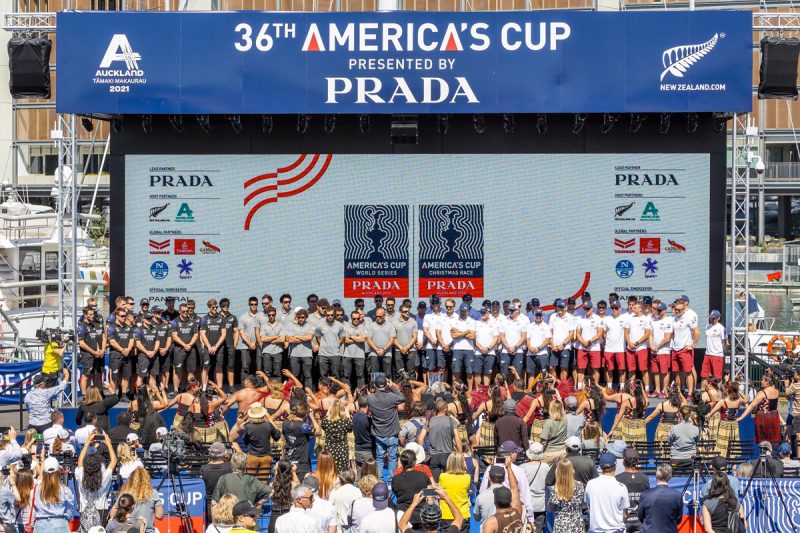
Emirates Team New Zealand, with their blazingly fast AC75, captured the ACWS portion of the truncated event. The second part, the ill-fated Christmas Cup, was canceled due to lack of wind. The organizers are holding out for a possibility of racing being added to the schedule in advance of the Prada Cup round robins, which start in just over three short weeks.
The American Magic team fared well, with hard-fought wins over the Kiwis and Italians. They find themselves in a very competitive situation going forward.
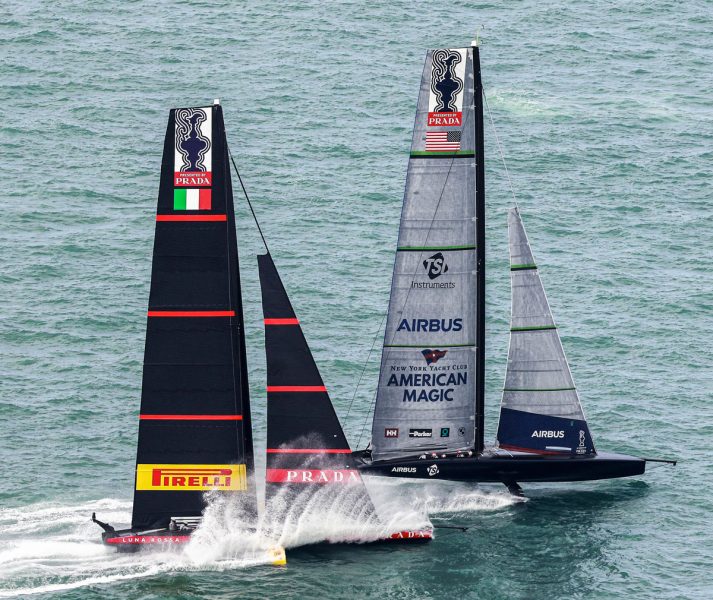
The ACWS kicked off in high style and circumstance as a mix of exciting, pulsating match racing combined with the wildly unpredictable, as the AC75 foiling monohulls tried in vain many times to exorcise their demonic software gremlins. That said, top speeds for the series clocked in at just under 50 knots!
Technical glitches attacked all the teams and the race management at one point or another during racing. More than once, thrilling action was brought to a sudden halt. It only takes a moment for these boats to gain or lose an advantage of several hundred meters or so in the blink of an eye.
The software issues affected no team more than INEOS Team UK, led by Sir Ben Ainslie, who is currently stuck with a slow boat that won’t fly. Hopefully he will not have to suffer the indignation of the Queen if she were to ask, “Who’s in second?” Well, it certainly wouldn’t be Sir Ben right now. In hindsight, their high-profile affiliation with design partner Mercedes Benz should probably have stuck to F1 racing.
Ainslie was under more than just the spotlight when he traded barbs with Prada Media Center boss, the legendary Bruno Troublé, at a press conference. Troublé was grilling him on INEOS’s struggles when Sir Ben shot back with, “Do you have any ideas?”
Troublé quickly fired back: “No, but we expect some answers!”
The one thing that we did learn is that these boats take a lot of energy, or a tow, to get up on their foils. The clock-consuming efforts to do so can be excruciatingly painful to watch at best and a throwback to the IACC days with no wind at their worst.
In throwing some shade at American Magic skipper Dean Barker, Luna Rossa Pirelli helmsman Jimmy Spithill summed it up best, saying: “Dean is quite a bit older than me, so when he’s talking about ‘old school’ racing, he’s probably talking more about himself!”
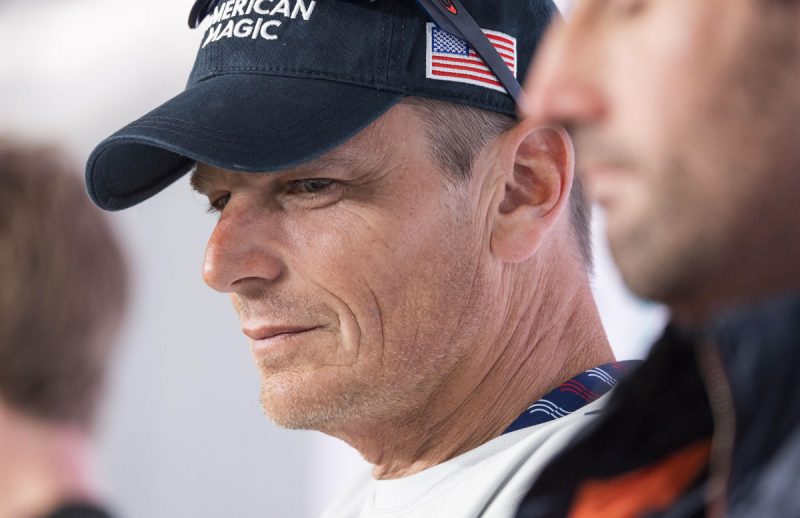
When these boats are up and foiling and in proximity, they are exhilarating to watch, as in the first matchup between Patriot and Te Rehutai. The Kiwis hunted down the Americans at the final upwind gate with a closing speed that was terrifying to watch and must have been heart-pounding to experience. ETNZ forced a penalty by gaining overlap rights over American Magic in the zone to round inside and ahead. A protest was dealt to the Americans and cleared shortly afterward as ETNZ jibed quickly but were in less wind. When the pair came back together, American Magic had regained their lead and left with a hard-fought 12-second win.
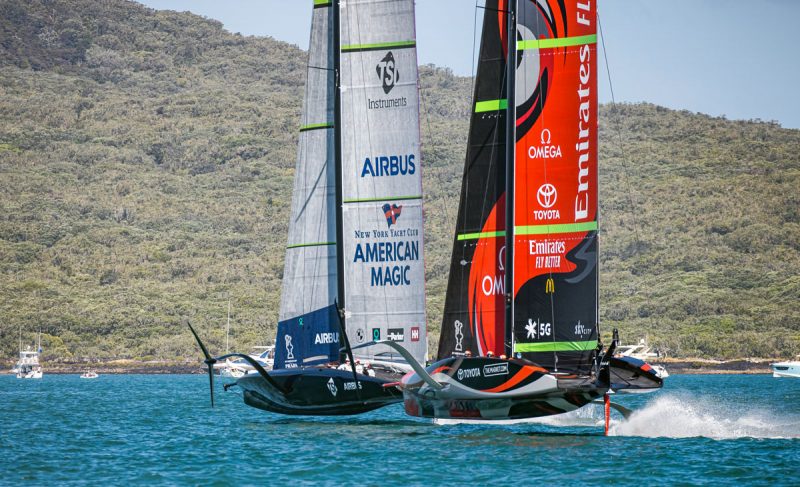
The much-anticipated rematch with the Kiwis was set for Race Day 3. It got off to a late start, as a massive Kiwi spectator fleet had to be moved off the course. With a forecast for light breezes and the race area positioned to the leeward of Rangitoto, the concern was that the breeze would prove fickle in the lee of the island. Clearing the area proved challenging and time-consuming, but eventually the first race of the day got underway just over an hour later than planned.
After a titillating pre-start, American Magic gained the advantage to stay in front of ETNZ. Eventually the Kiwis tacked away, unable and unwilling to live in the dirty air of the Americans, who were able to continue to work the right-hand side of the course for a further advantage, but the 12-second margin was still slim. By the leeward gate, New Zealand had hauled American Magic in to trail by just 3 seconds. The big race-changing moment was to come at the top of the second beat, when the Americans fell off their foils through a tack and parked up just short of the windward gate. The mistake proved costly, handing the lead to the Kiwis, who rounded the windward mark 54 seconds ahead. From there, ETNZ cruised to victory, sailing the final lap unchallenged to win by a minute and 19 seconds.
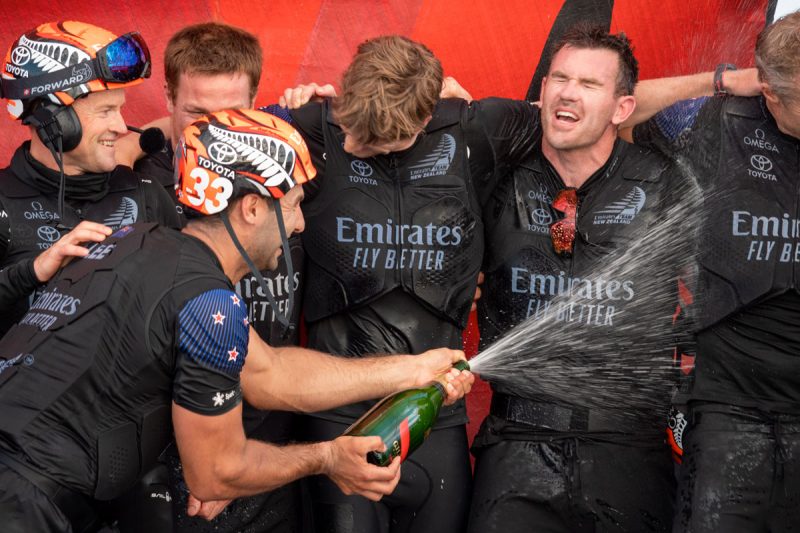
Unfortunately, the ACWS ended with a whimper rather than a bang. The Christmas Cup finale failed to materialize when the winds died on the final day, preventing the boats from getting up on their foils.
The unpredictable Kiwi weather will be here to stay throughout the next few months, as the competition heats up again in the Prada Cup elimination series, set to start on January 15. In the meantime, you can relive the races on YouTube, or you can get a pricey subscription to NBC Gold, unless you want to wait the extra hours for NBC Sports’ delayed rebroadcast or pony up for a Virtual Private Network.
EWOL Propellers Introduces Andromeda; Dedicated to Sailboats from 20’ to 36’
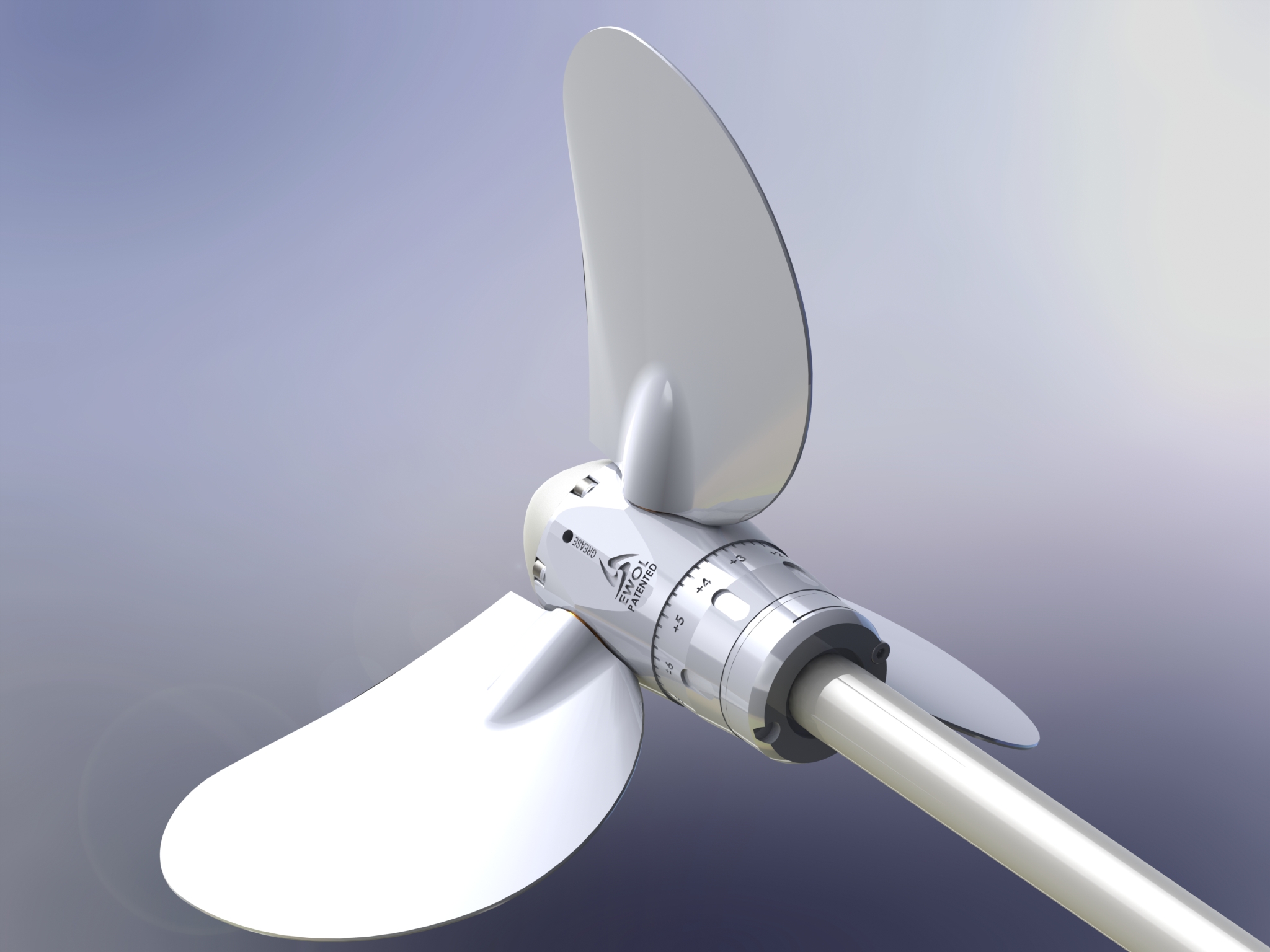
Small but powerful, it has a slim and light body and it’s suitable for boats from 20 – 35 feet and engines from 7 to 30 hp. Learn more here and visit www.ewol–propellers.com.
Eyewitness Reports on Cyclone Yasa’s Fury
Latitude 38 editor-at-large Andy Turpin was in touch with Adam Wade, manager of Fiji’s Vuda Point Marina, and reports they’ve had quite the challenging year. In March, while visiting friends and family in Australia, Wade suddenly found himself unable to return home to Fiji due to the nationwide COVID-19 lockdown. It was more than five months before he finally got back to his home and business on Viti Levu — just in time for the South Pacific’s cyclone season. As reported earlier, Fiji got walloped last week by Cyclone Yasa, one of the most powerful storms ever recorded in the western South Pacific.
Among international cruisers, Vuda Point is famous for protecting sailboats from cyclone damage by lodging their keels in trenches lined with tractor tires. But as Yasa passed, luck apparently played an equally important role. Wade reports, “We were very lucky, as the eye of the cyclone moved north of us and didn’t affect us directly. The top [wind-] speed recorded by one of the yachts [at Vuda] was 48.5 knots. Relatively mild. We are feeling for our friends up north though. The cyclone hit Savusavu directly. Four yachts ended up ashore and there was some damage to the docks at The Copra Shed Marina. However, they were all expecting worse and said it wasn’t as bad as Cyclone Winston, which hit in 2016.
“One resident of Savusavu said that when the vortex of the cyclone was passing over them, he managed to look up at the sky and could see the eyewall all around, and in the middle was a whole bunch of flying debris — as would be expected — but additionally there were thousands of birds caught in the middle that couldn’t escape and were being carried by the winds.”
The SoPac Cyclone Season officially lasts until April, and its storms tend to be more powerful in the western half of the South Pacific Basin. Although we don’t have any hard numbers, we assume that this year more boats than usual will be riding out the storm season in Fiji due to the official “closure” of nearly all surrounding countries — especially Australia and New Zealand.
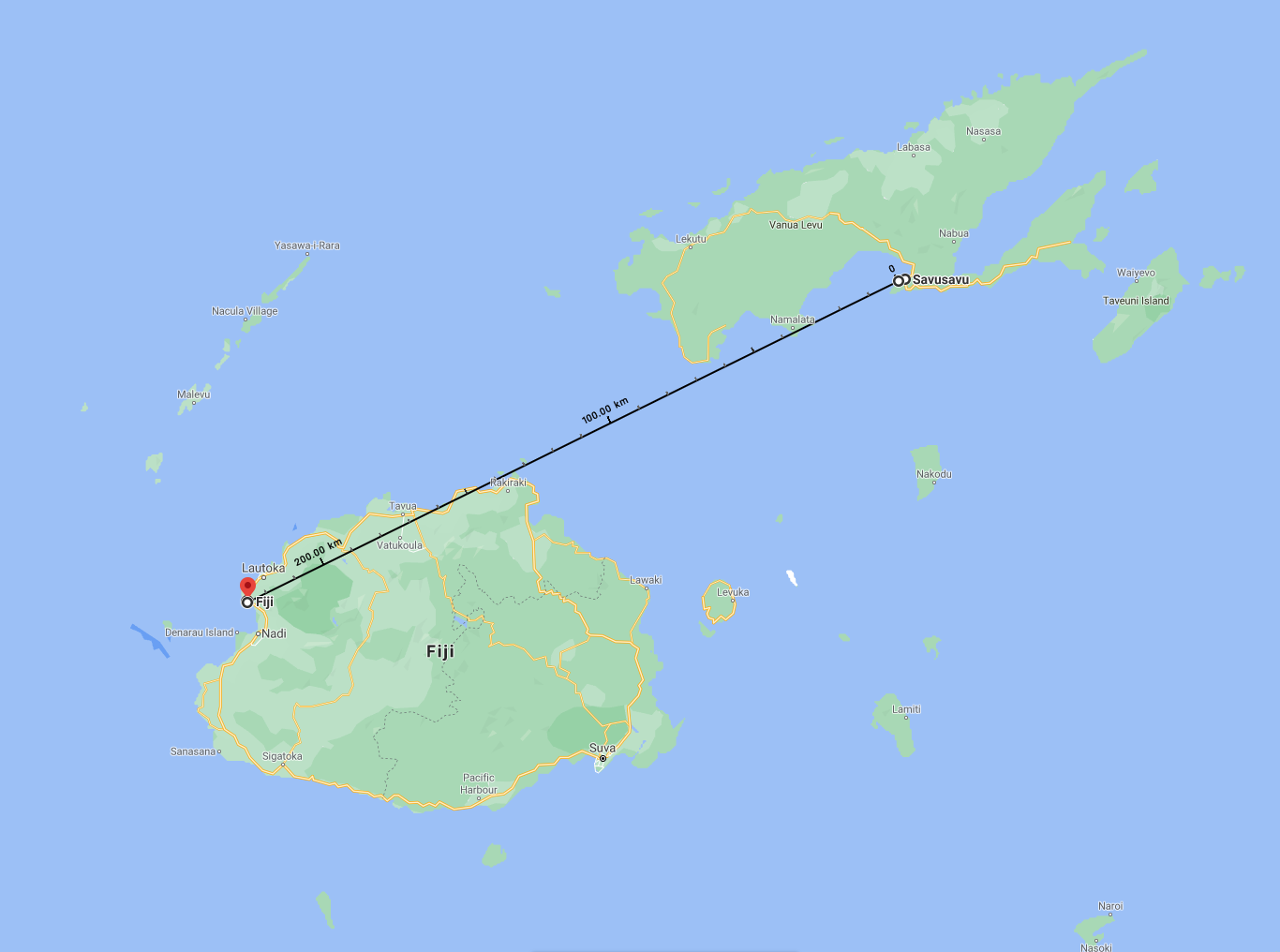
Meanwhile, we also heard from former Richmond Yacht Club harbormaster John Dinwiddie and Diane Brown, who were aboard their Hans Christian 38T, Tabu Soro, also weathering the storm at Vuda Point. When we were first in touch ahead of the storm, John said they were busy stripping all the canvas and sails from the boat and tying her to anything that wouldn’t move. Since then they’ve been putting it all back together again. Last year they were anchored outside the Royal Suva Yacht Club in Suva, which also only had 50 knots of wind, so they’ve been lucky so far. They’ve been through three cyclones in two years.
The Category 5 cyclone Yasa was originally predicted to go right over the main island of Viti Levu — meaning Vuda Marina and Port Denarau — and would have affected most of the cruising boats in the area. Luckily, the cyclone kept shifting farther east and went over the eastern edge of Vanua Levu and down through the Koro Sea area. The cruising boats at Vuda Marina and the ones tied up in the mangroves near Port Denarau had no damage, or very little.
John heard the boats in Savusavu had a harder time, with perhaps seven boats breaking loose or dragging their moorings. Some went up onto the beach or nearby rocks. Apparently none of the boats that broke loose had anyone on them. One boat did drag down onto a boat owned by cruiser Curly Carswell, but he and his boat are fine. On another sad note, the old 100-ft wooden S/V Pantagruel was out at the outer island Vanua Balavu, broke loose, and was pushed up onto the rocks. No one on board was hurt and they are trying to figure out how to retrieve the the boat and save her.
John says three boats have now decided that they don’t care for playing this game and have requested permission to sail to Australia for the season. This means roughly nine days of sailing and then going into a quarantine hotel for two weeks, at their own expense.
The cyclone has caused at least four deaths, but since communication is very slow with many cell towers destroyed, news is only trickling out. They have seen photos of flattened homes and schools and have heard relief is coming from New Zealand, Australia, and of course Fiji. All are trying to get help to the people in need.
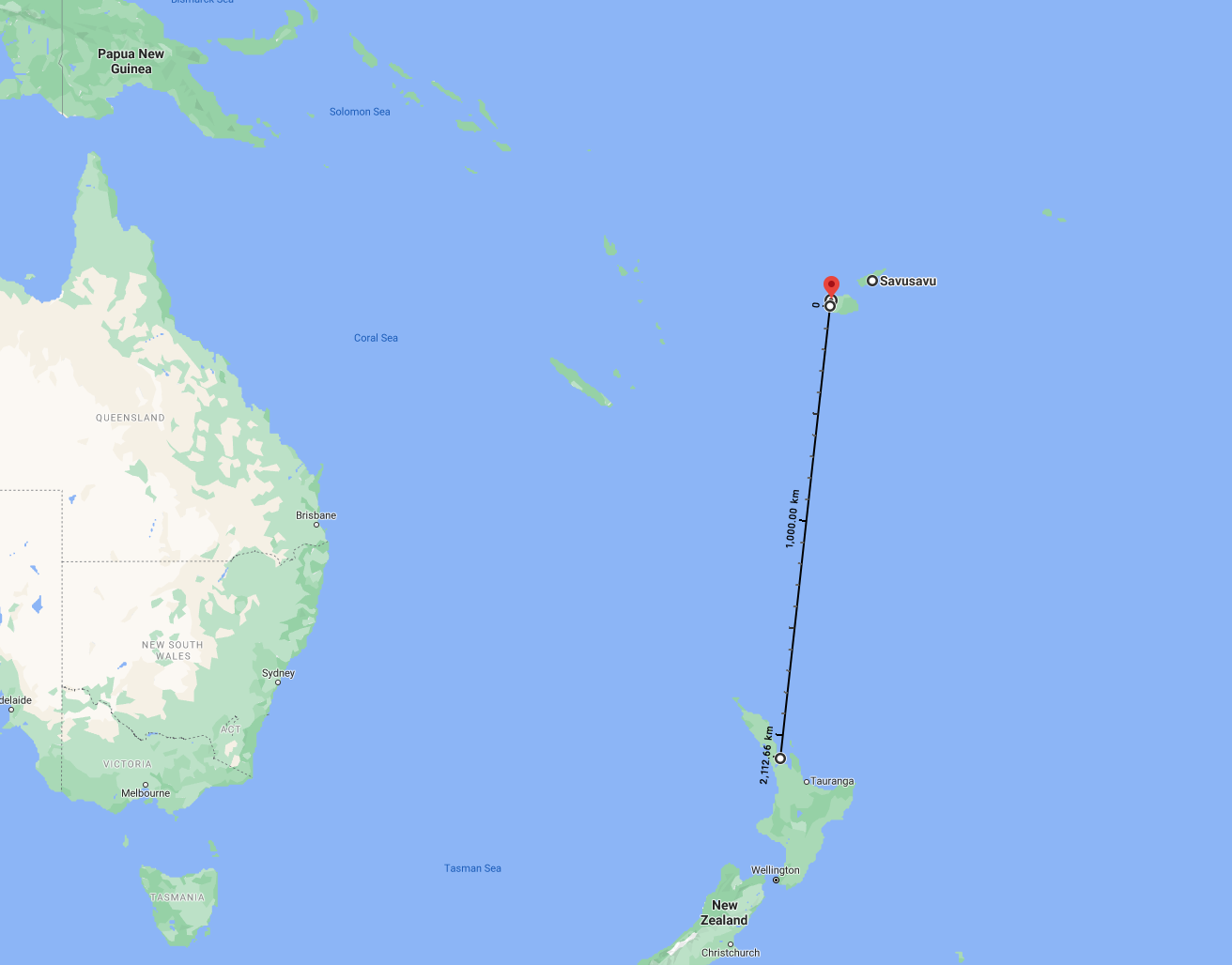
John suggests, for those who wish to help, there is a group called SeaMercy.org which is based in Port Denarau. The volunteer group, which is largely made up of cruisers, works with local governments to help the South Pacific islands in times of need
On the other front, John says Fiji has been very lucky, with no COVID-19 cases recorded in over 200 days. The downside is that there is no tourist business coming into the country. Because of this, a huge number of people have lost their jobs, and they don’t have an unemployment system like there is in the US. He says many of the folks have moved back to family farms to survive, but the cyclone has destroyed their crops along with their homes. On the smaller islands, they have also lost their boats for fishing and transportation.

The Fijian people are tough and they will survive, but 2020 has been a rough year in Paradise.
Yacht Race Cancellations Amid Pandemic Surge
Jack Frost
On December 18, Encinal Yacht Club’s rear commodore, Brent Draney, sent the following message to racers in EYC’s Jack Frost midwinter series: “We have been deliberating on the ability to hold the January 2 Jack Frost races under the current county health guidelines as well as the competitors’ ability to race under the restrictions.” Encinal is located in the county (and city) of Alameda. “We are also looking at the accelerating infection rates and dwindling hospital beds. Needless to say, the situation is not good, and it will take some time to change the trajectory that we are on. We also appreciate the need for certainty so that you can appropriately plan for crew just after the holidays.
“Encinal Yacht Club has decided to postpone the January 2 race day for three weeks and will hold the next Jack Frost on January 23. The intent is to then resume the original schedule on February 6, 2021. It is our hope that the extra three weeks gives sufficient time for current health orders to make a meaningful impact and that both shorthanded and crewed racing will be able to resume.
“Thank you for your patience and understanding as we make adjustments, and Encinal wishes you all a safe holiday season.”
Resolution Regatta
We went to Corinthian YC’s website to sign up for their New Year’s Day Resolution Regatta, which we thought would be an excellent way to start the year. But the club had posted this message: “It appears that the recent lockdown order does not permit gatherings from more than one household, or sports activities with shared equipment. This appears to rule out competitive racing, and there appears to be little chance that the regulations will ease before the regatta date. Regrettably, we are cancelling the January 1 regatta. We hold out strong hope for our classic Midwinter regatta, and hope you will consider entering that race if you have not already done so.” They are refunding the entry fees to skippers who’ve already registered.
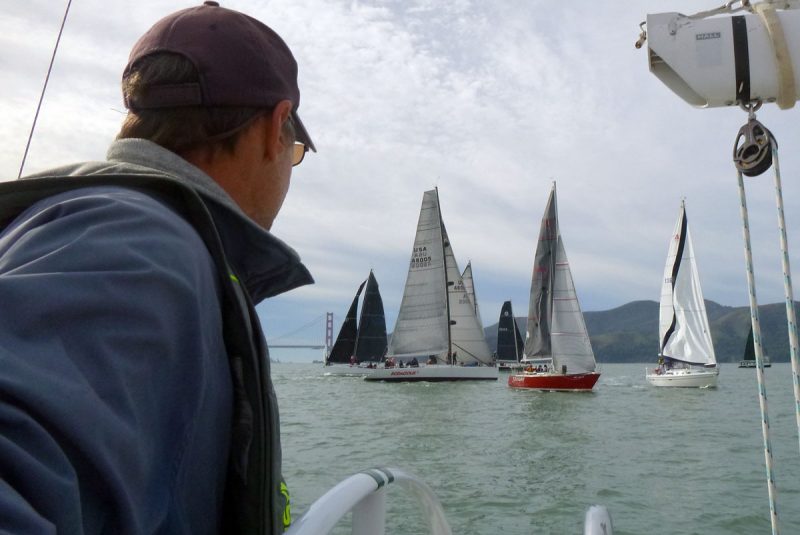
As far as we know, other races scheduled in the Bay Area in early January are still on. If you know of other cancellations or postponements, please let us know.
Rolex Sydney Hobart
While the two cancellations above impact the most Bay Area sailors, they’re small potatoes compared to the news out of Australia. On Saturday, we received the following press release:
“It is with great regret that the Cruising Yacht Club of Australia announces that the 76th Rolex Sydney Hobart Yacht Race will not be proceeding in 2020. The impact of COVID-19 that has disrupted sporting events around the globe for so much of the year has added the Great Race to its list.”
“We were so well prepared to run the race, and we’re only six days from the start,” said CYCA’s commodore, Noel Cornish. “This is the first time in 76 years that the race will not be conducted.”
“Following the announcement by the Tasmanian premier, Peter Gutwein, this afternoon, it is now impracticable for the CYCA to conduct the race under prevailing COVID-19 restrictions,” continued the press release. “Yesterday, the Northern Beaches local government area of Sydney had been classified a ‘High Risk’ zone which would prevent any residents from travelling to Tasmania. This afternoon, Greater Sydney was defined as ‘Medium Risk’ whereby people entering Tasmania from Sydney are required to quarantine for 14 days on arrival. As this restriction would apply to all competitors, families, race management and staff, it is unrealistic to proceed further with planning for the race.”
The Rolex Sydney Hobart starts from Sydney, in New South Wales, on Boxing Day every year. Vast numbers of spectator boats surround the starting line, and TV coverage is excellent. The destination port, Hobart, lies 628 miles distant on the island state of Tasmania. In 2019, 157 yachts competed, including some very high-profile and high-budget 100-footers. The fleet took three to five days to complete the course.
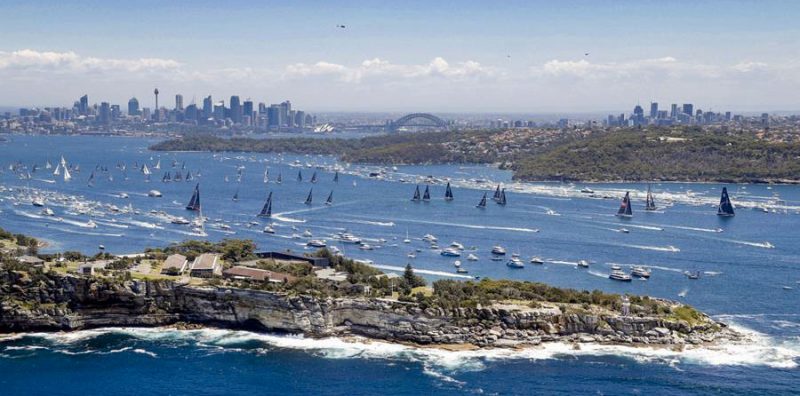
CYCA is still offering a free Virtual Regatta in which anyone can participate. “The Official Game of the Great Race is forging on. Take on the 628-mile journey from the comfort of your own home.”

